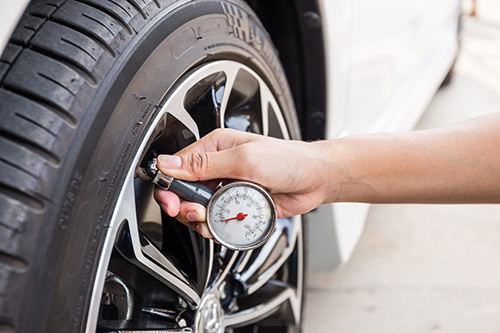Poorly-maintained tyres can increase both your costs and the risk of a road traffic incident, so correctly inflated tyres are vital to safe and efficient fleet operations.
The most common cause of a tyre blowout is under-inflation, which occurs when a tyre is not sufficiently filled with air. Reduced pressure causes more tyre surface area to touch the road, resulting in more friction and therefore more heat. A combination of the low pressure and consequential increased heat can cause premature wearing and blowouts.
In addition, under-inflating leads to a rise in fuel consumption. This is because a tyre’s rolling resistance is a key factor in affecting MPG. Under-inflated tyres therefore increase road resistance – a reduction in air pressure by one bar causes a 30% increase in rolling resistance, and a rise in fuel consumption of 3%. That might not sound like much, but across a fleet it can result in a substantial hike in fuel bills.
Tyres also wear more quickly when under-inflated. A tyre that is 20 per cent under-inflated will wear out 25% faster than a tyre kept at the correct pressure. On the other hand, over-inflating reduces the tyre’s contact with the road surface, which negatively impacts braking and handling, while increasing the risk of aquaplaning in wet weather.
Since 2012, all new cars have had to include a tyre pressure monitoring system (TPMS), to help make drivers aware of any drops in pressure which could impact safety or efficiency. However, organisations running fleets of vehicles often find that drivers don’t always report TPMS warnings, which can make fleet management much harder and more costly.
One of the golden rules of fleet management is that planned, preventative maintenance saves money. Research recently published by van hire specialist Northgate helps to put a number on exactly how much unplanned downtime can cost. Its study found that every light commercial vehicle (LCV) spends four days a year in the workshop or garage, at an average cost of £800 per van, per day. This would mean that a business with 100 LCVs would lose £320,000 each year due to downtime.
However, telematics has the solution to this fleet management issue, in the form of Trakm8 Connectedcare. Connectedcare works through deep connectivity with a car or LCV’s CAN bus system, enabling it to read diagnostic trouble codes (DTCs) and dashboard warning lights, then report them to a fleet manager via a real-time alert. It also alerts transport managers to any issues with tyre pressure, enabling them to deal with the issue in a quick and cost-effective manner.
Other beneficial fleet management features of Connectedcare include combating fuel fraud by providing highly accurate data on fuel levels and real MPG, as well as alerts when fuel tanks are drained. You can also benefit from true ODO readings to enable more accurate service regimes, and alerts when diesel particulate filters need cleaning or AdBlue levels are too low.
Trakm8 offers Connectedcare as a stand-alone product, or incorporated into a wider telematics solution. It is just one of the ways in which Trakm8 goes beyond standard vehicle tracking to offer even better return on investment.
If you would like to find out more about our Connectedcare solutions, fill out the short form below and one of our team will be in touch. Alternatively, call us on 0330 311 5157 or email us at info@trakm8.com.
Source: https://www.trakm8.com
CUT COTS OF THE FLEET WITH OUR AUDIT PROGRAM
The audit is a key tool to know the overall status and provide the analysis, the assessment, the advice, the suggestions and the actions to take in order to cut costs and increase the efficiency and efficacy of the fleet. We propose the following fleet management audit.




